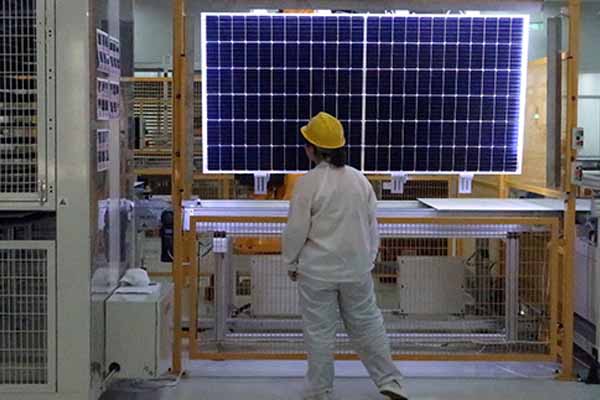Renewable energy sources are expected to surpass coal as the primary source of electricity generation by early 2025, worldwide, according to a report released by the International Energy Agency. The report also noted that the rapid increase in renewable energy installations, with the total capacity expected to nearly double in the next five years, may help to maintain the goal of keeping global warming to 1.5 degrees Celsius.
Renewables are likely to be the largest source of global electricity generation by early 2025, surpassing coal, the International Energy Agency said, adding that the sharp acceleration in renewable energy installations, with the total capacity worldwide set to almost double in the next five years, could possibly keep the goal of limiting global warming to 1.5 degree C alive.
In India, new renewable energy installations are set to double by 2027, led by solar energy and driven by competitive auctions implemented to achieve Centre’s target of 500 GW of non-fossil energy capacity by 2030. The Ministry of Power and New & Renewable Energy has a domestic goal of installing 500 GW of renewable energy capacity by 2030. India has updated its nationally determined contribution (NDC) under the Paris Agreement on August 26 with two broad quantifiable goals — reducing emissions intensity of its Gross Domestic Product (GDP) by 45% from 2005 levels by the year 2030, and achieving about 50% cumulative electric power installed capacity from non-fossil fuel-based energy resources by 2030. India also has a long-term goal of reaching net-zero emissions by 2070.
“Renewables were already expanding quickly, but the global energy crisis has kicked them into an extraordinary new phase of even faster growth as countries seek to capitalise on their energy security benefits. The world is set to add as much renewable power in the next 5 years as it did in the previous 20 years. This is a clear example of how the current energy crisis can be a historic turning point towards a cleaner and more secure energy system. Renewables’ continued acceleration is critical to help keep the door open to limiting global warming to 1.5 °C,” said Fatih Birol, IEA Executive Director in a statement.
“The most consequential insight from the IEA analysis relates to the shift in manufacturing capacity away from China to the US and India. As the report suggests, India’s dedicated PLI scheme for incentivizing solar panel manufacturing as well as host of initiatives for a boost in the country’s aggregate manufacturing capacity are expected to yield significant benefits for India. GoI’s intervention would be successful in harnessing the synergies between climate mitigation, economic growth and job creation,” said Vaibhav Chaturvedi, fellow, Council for Energy Environment and Water.
This year’s forecast has been revised upwards by almost 30% from last year’s IEA renewables forecast despite energy market disruption, mainly because China, Europe, the United States and India are implementing policies and market reforms more quickly than expected to combat the energy crisis. China’s 14th Five-Year Plan and market reforms, the REPowerEU plan; the US Inflation Reduction Act and India’s 500 GW renewable energy goal are the main policy changes fueling growth.
For India, this year’s forecast has been revised upwards by 7% from last year owing to higher-than-expected PV capacity additions in 2022; the announcement of several ambitious domestic PV manufacturing projects; and improvement of auction rules for wind farms. “The overarching drivers of renewable energy growth are India’s targets of 500 GW of non-fossil installed capacity by 2030 and net zero emissions by 2070, ensuring long-term visibility for renewable energy developers,” the report said.
Poor financial health of India’s DISCOMs (distribution companies) continues to prevent faster renewable capacity deployment, IEA has flagged. The number of overdue payments to renewable power producers continues to grow, worth almost $ 3 billion in June – an increase of nearly 60% since January 2021. DISCOM payment delays negatively affect renewable energy developers’ profits and increase project risks; DISCOMs are also reluctant to support rooftop PV deployment in their grids because they fear losing revenue from energy sales.
“Over one-third of rooftop PV systems added in 2022 were installed in the state of Gujarat, which is home to just 5% of India’s population. High deployment in this state was achieved through net billing and subsidies, which exist in most Indian states. This indicates that effective on-the-ground implementation of policies is crucial to achieve faster distributed PV growth in India. In the accelerated case, India achieves 50% higher renewable capacity deployment over 2022-2027 than in the main case, putting the country firmly on course to meet its 2030 targets,” the report said.















